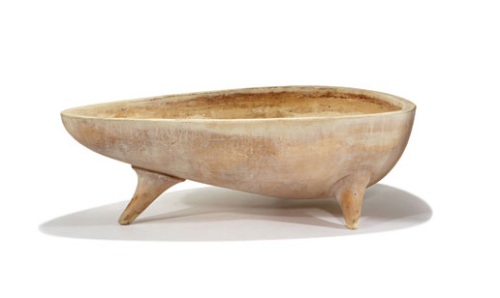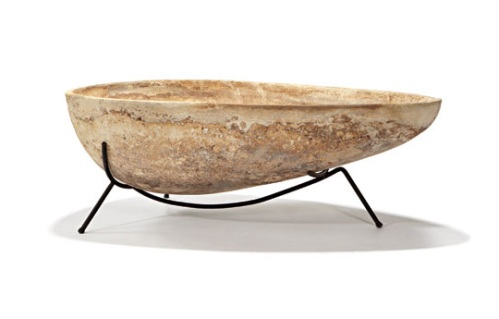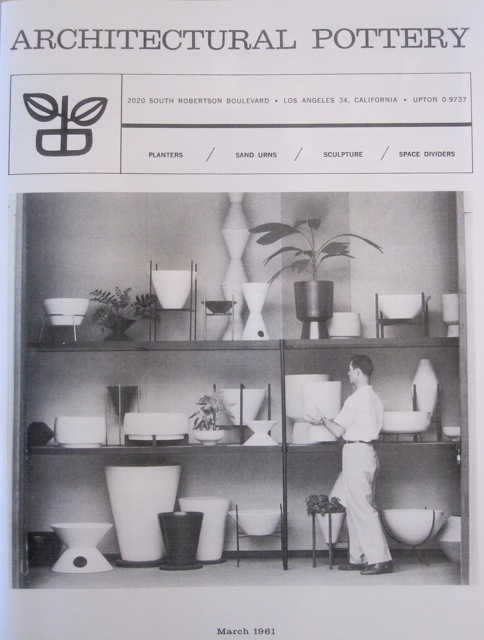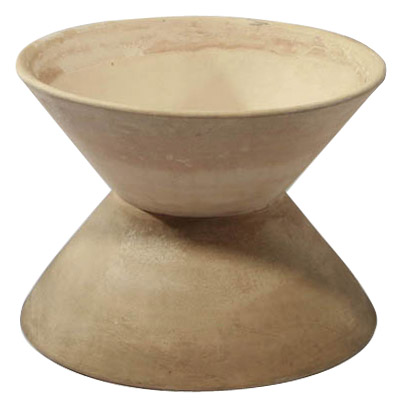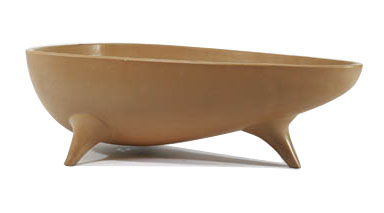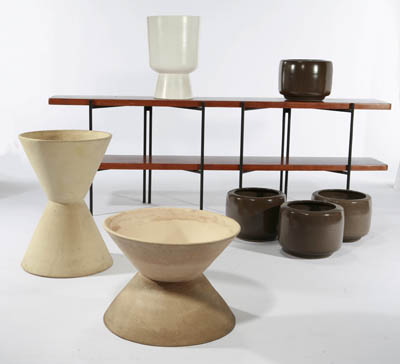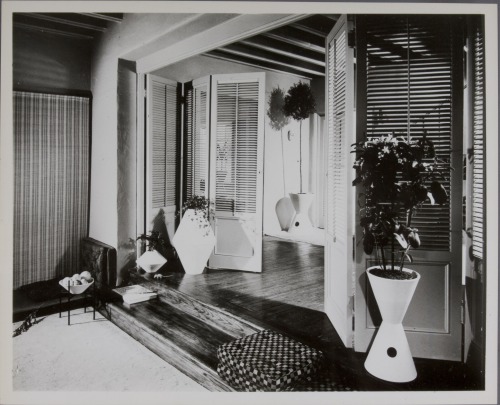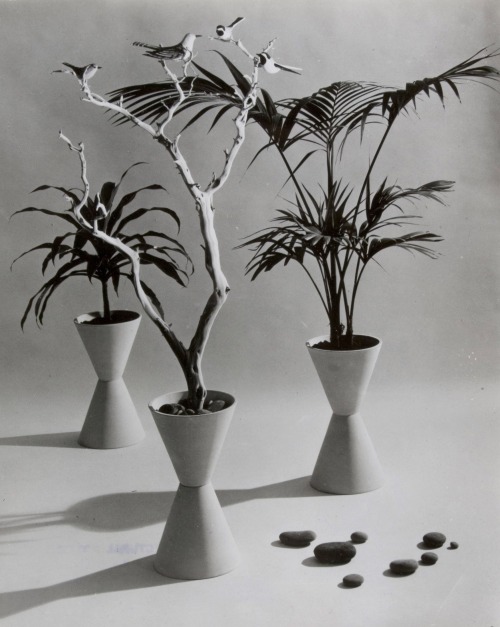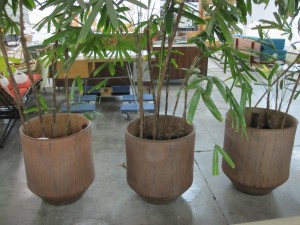Initially created from a class project in 1949, Architectural Pottery brought the outdoors inside through mass-produced geometric earthenware, which quickly became a staple in modern living. Designers, including Malcom Leland, David Cressey, John Follis, and Rex Goode, each created their own distinctive forms designed for “small plants to large trees”.
Today we examine model G-99 and G-99L designed by Rex Goode, more colloquially known as the “pig” planter, one of the many designs produced by Architectural Pottery. The June 26, 2011 Modern Art & Design Auction will feature two versions of the “pig”, one with a detachable base, and one that is a complete piece.
For some insider information on the “pig” planter we asked Bill Hertel, integral Architectural Pottery employee. Max and Rita Lawrence, the company founders, hired Hertel to be their first showroom manager. Hertel would later come to supervise the catalogue production, as well as work directly with the design community to get products developed for specific projects.
1. How did the “pig” planter come to be so commonly known as the “pig” planter?
The G-99L was one of the designs that was the result of the challenge that instructor LaGardo Tackett gave to his students at the design school where he taught. It was designed by Rex Goode and the nickname of ‘pig’ is lost in history.
2. Were the anteater, bird bath, and/or sea-lion designed around the same time as the “pig” planter?
The Gordon Newell designs: anteater, bird bath and sea-lion came along later and were already in the line when I joined the firm in 1960.
3. Is the “pig” with the detachable base more rare than the “pig” that is one complete piece?
As the wrought iron stands became ‘out of favor’, so to speak, the design was modified to incorporate integral legs, ‘feet’. No records were ever kept, that I know of as to number of sales for either, but with the newer design I’m sure sold more than the original, but it was never a ‘big’ seller as the cylinders became.
For more information on Architectural Pottery and Max Lawrence, check out this post .
Lot Information:
Rex Goode
“Pig” planter
Architectural Pottery
designed circa 1949
Model no. G-99L
14″h x 26″ x 41.75″
Estimate $2,500 – 3,500
Rex Goode
“Pig” planter
Architectural Pottery
designed circa 1949
Model no. G-99
13″h x 26.5″ x 42″
Estimate $2,500 – 3,500

